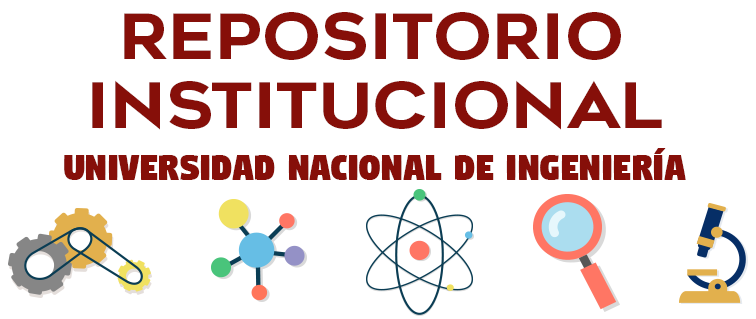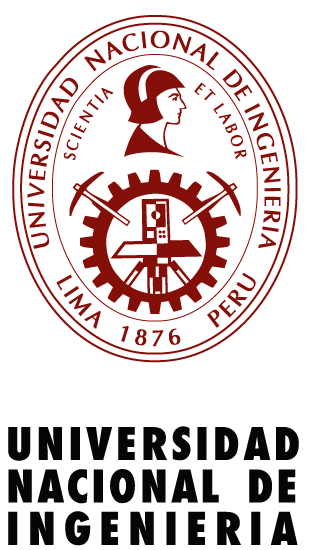Por favor, use este identificador para citar o enlazar este ítem:
http://hdl.handle.net/20.500.14076/27954| Título : | Elaboración del concreto con agregados reciclados para su utilización en la industria del premezclado |
| Autor : | Davila Pablo, Milagros Cecilia |
| Asesor : | Huaynalaya Rashuamán, Max |
| Palabras clave : | Industria del premezclado;Concreto con agregados;Objetivos de Desarrollo Sostenible (ODS) |
| Fecha de publicación : | 2024 |
| Editorial : | Universidad Nacional de Ingeniería |
| Resumen : | La Asamblea General de la ONU ha adoptado la agenda 2030 para el desarrollo sostenible donde se establecen Objetivos de Desarrollo Sostenible (ODS) donde el rumbo de la construcción es orientado hacia un fin más sostenible. Por ello, en la presente investigación se pretende abordar experimentalmente la viabilidad de elaborar mezclas de concreto con reemplazos de agregados reciclados y que dicho concreto esté orientado para su uso en la industria del premezclado. Ello se da con la finalidad de que a futuro las concreteras puedan emplear el concreto devuelto de obra como fuente para obtener agregados reciclados a su propia industria y de esta manera minimizar la disposición de sus residuos generados; todo ello contribuirá a generar economía circular en la industria del concreto.
El material reciclado será el proveniente de las devoluciones y mermas producto de la elaboración del concreto premezclado, pero para fines de la investigación se empleó agregado procedente de una empresa que manufactura los agregados reciclados con material procedente de las demoliciones de estructuras, así como los residuos de las obras de construcción. En este caso la empresa chanca, tritura y tamiza el material para luego segregarlo por tamaños y tipos de agregados; para el caso de esta investigación se empleó agregado fino y agregado grueso reciclado.
Los agregados reciclados tienen la inherente propiedad de ser altamente porosos y absorbentes, es aquí donde radica el desafío de emplearlos en una mezcla de concreto ya que terminan absorbiendo líquido de la pasta y esto hace que la pérdida de la trabajabilidad sea abrupta e incluso no se llegue al slump inicial requerido. En esta investigación se brinda una alternativa de aditivos mediante los cuales pudimos obtener las propiedades del concreto en estado fresco y endurecido que requieren y ofrecen las concreteras a las obras; dichas propiedades no hubieran podido ser alcanzadas solamente empleando la tecnología actual de aditivos de un súper plastificante con retardante inicial, sino que fue necesaria la inclusión de los polímeros, que gracias a su efecto se pudo reducir el efecto adverso que generaba la porosidad y absorción de los agregados.
De esta manera con la alternativa aditivos propuestos, se pudo realizar diseños de mezcla de mortero y posteriormente de concreto con reemplazos parciales de agregados reciclados: 30% y 50%; a escala de pruebas también se efectuó con el 100% de agregados reciclados, pero en este último caso no se pudo llegar al slump inicial requerido y mucho menos tener la pérdida de trabajabilidad necesaria. Para obtener los valores requeridos se hubiera tenido que adicionar cantidades fuertes de aditivo superplastificante y esto elevaría en demasía el costo por metro cúbico por lo que ya no es viable su desarrollo para aplicarlo en la industria.
Luego de realizar las pruebas en los diseños de mezcla de concreto con reemplazos parciales de agregados reciclados empleando los polímeros, se pudo obtener valores esperados de slump inicial, mantenimiento de la trabajabilidad, contenido de aire, fragua inicial, fragua final y resistencia a la compresión final requeridos. Con ello se pudo demostrar que técnicamente sí es viable el uso de los agregados reciclados dentro de la mezcla de concreto, sin embargo, si lo evaluamos a nivel económico el costo por metro cúbico termina siendo mayor mientras mayor sea el porcentaje de agregado reciclado empleado. En tal sentido, para el caso de la evaluación económica del uso de los agregados reciclados, se debe ir de la mano de la sostenibilidad ya que, al emplear dichos agregados en la mezcla de concreto, se está dejando de disponer este material residual en un relleno sanitario, el cual también tiene un costo por disposición por metro cúbico y a su vez existe un costo de impacto al medio ambiente por la pérdida de terreno que finalmente terminará albergando dichos residuos. si el análisis económico llega hasta este nivel sí es rentable el uso de esta tecnología propuesta. The UN General Assembly has adopted the 2030 agenda for sustainable development where Sustainable Development Goals (SDGs) are established where the course of construction is oriented to a more sustainable purpose. For this reason, in the present investigation it is intended to experimentally address the feasibility of preparing concrete mixtures with the replacement of recycled aggregates and that concrete must be oriented for the ready-mix industry. With this, in the future the concrete companies could use the returned concrete as a source to obtain recycled aggregates for their own industry and thus minimize the disposal of their generated waste; all of this will contribute to generating a circular economy in the concrete industry. The recycled material will come from the returns and waste resulting from the preparation of ready-mix concrete, but for the purposes of the investigation, the aggregate from a company that manufactures recycled aggregates with material from the demolition of structures, as well as waste of construction works, was used. In this case, the company crushes and sieves the material to later segregate it by size and type of aggregates; in the case of this investigation, recycled fine aggregate and recycled coarse aggregate were used. Recycled aggregates have the inherent property of being highly porous and absorbent, this is why using them in a concrete mix is a challenge, the recycled aggregates end up absorbing liquid from the paste and this causes the loss of workability to be abrupt and does not even get to the required initial slump. This research provides an alternative of admixtures through which we were able to obtain the properties of concrete in a fresh and hardened state that ready-mix concrete companies requires and offers to the buildings; those properties could not have been achieved only using the current technology of admixtures of a super plasticizer with an initial retardant, it was necessary to include polymers admixture, which thanks to their effect could reduce the adverse effect generated by the porosity and absorption of the aggregates. In this way, with the alternative of admixture proposed, it was possible to carry out mortar mix designs and later concrete with partial replacements of recycled aggregates: 30% and 50%; at the test scale, 100% recycled aggregates were also used, but in the latter case the required initial slump could not be reached, much less the required loss of workability. To obtain the required values, large amounts of superplasticizer additive would have had to be added and this would raise the cost per cubic meter too much, so itsdevelopment for application in industry is no longer viable. After carrying out the tests in the concrete mix designs with partial replacements ofrecycled aggregates using the polymers, it was possible to obtain expected values of initial slump, maintenance of workability, air content, initial set, final set, and compressive strength required. With this, it was possible to demonstrate that the use of recycled aggregates withinthe concrete mix is technically feasible, however, if we evaluate it at an economic level, the cost per cubic meter ends up being higher when the percentage of recycled aggregate used is higher. In this sense, in the case of the economic evaluation, sustainability must go hand in hand since, by using recycled aggregates in the concrete mix, this residual material is no longer being disposed of in a sanitary landfill, which also It has a disposal cost per cubic meter and, in turn, there is an environmental impact cost due to the loss of land that Will ultimately end up housing said waste. If the economic analysis reaches this level, the use of this proposed technology is profitable. |
| URI : | http://hdl.handle.net/20.500.14076/27954 |
| Derechos: | info:eu-repo/semantics/restrictedAccess |
| Aparece en las colecciones: | Maestría |
Ficheros en este ítem:
| Fichero | Descripción | Tamaño | Formato | |
|---|---|---|---|---|
| davila_pm.pdf | 2,57 MB | Adobe PDF | Visualizar/Abrir | |
| davila_pm(acta).pdf | 946,4 kB | Adobe PDF | Visualizar/Abrir | |
| informe_de_similitud.pdf | 1,4 MB | Adobe PDF | Visualizar/Abrir |
Este ítem está sujeto a una licencia Creative Commons Licencia Creative Commons

Indexado por:



